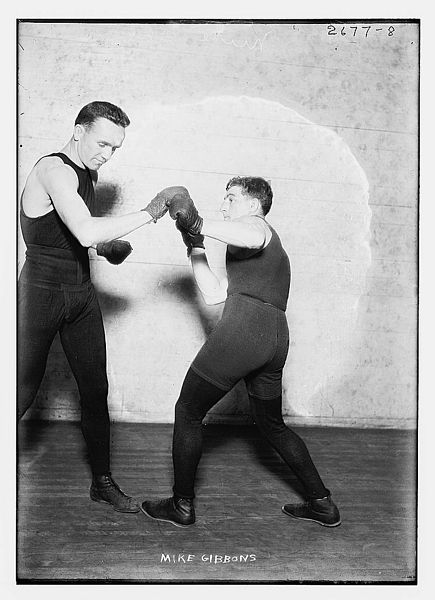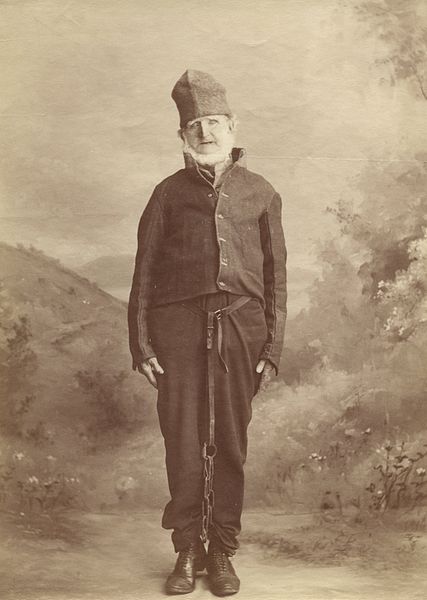
"There was a stool in the corner of the roped inclosure and on each stood a pair of badly damaged boxing gloves."
One of my favorite A.J. Liebling articles is “The University of Eighth Avenue,” a 1955 SI profile of old-time New York boxer Billy Ray. In the piece, Ray fondly recalls a Brooklyn barroom featuring all manner of organized violence: cockfighting, dogfighting and boxing. The tavern was across the street from Calvary Cemetery. By chance, I just happened upon an old article in the Brooklyn Daily Eagle from 1889 (a reprint of a New York Sun piece), which I think is about the same establishment. Ray had given the proprietor’s name as “Hughie Bart” and the Eagle refers to him as “Pete Hart,” but there are many similarities. The full article:
“Just across the road from the northeast corner of the old Calvary Cemetery stands a little frame structure that is called a pavilion by Pete Hart, who owns it. Mr. Hart is an old time free and easy singer, and there are few men on Long Island or anywhere else who know how to entertain non church goers better than he. Pete is a slim man, verging on the meridian of life, and has an old gold mustache. To the casual observer the pavilion is a very ordinary saloon, with no pretensions to grandeur. The first story consists of two rooms. The outer room has a little bar across one end of it and the inner room is ornamented with a lot of pictures representing calm and rural scenery; also with a few round tables, some wooden chairs and a number of young men who look as though they were given to scrapping. There is a small door in one end of this room which opens into an inclosure about thirty feet square. In the center is a rough wooden platform, fenced in with ropes. On one side are three rows of planks, the upper one being so near the low ceiling that a tall man can’t sit upon it. Behind this door is an ancient piano.
Yesterday afternoon a sign in chalk was hung about the door leading into this inclosure, which declared that admission could be had for the trifling outlay of 25 cents. A stalwart young man stood in front of the door collecting this amount from every one who entered. At 4 o’clock about one hundred and sixty men were inside and the air was heavy with tobacco smoke. There were stools in the corners of the roped inclosure and on each stood a pair of badly damaged boxing gloves, and a bottle of water. The gentlemen were all known to each other as Skinny, Freckles, etc., and after a young man had been induced to thump on the piano, various heroic efforts were put forth to induce other young men to sing. There was a stir in the doorway and two young men in tights and canvas shoes climbed through the ropes into the ring, and, after affectionately shaking hands, began to pound each other with the gloves. The utmost order prevailed during the set to. After it was over a young fellow danced a clog and was enthusiastically applauded. James McNamee of the Hornbacher Athletic Club sparred three rounds with Dan O’Hara. McNamee is a handsome young fellow and knows a lot about boxing. He has sparred frequently with Jack Dempsey and has proved himself worthy of meeting good men. He thumped O’Hara whenever and wherever he liked to the great delight of the crowd and to the astonishment of Mr. O’Hara.
Hugh Groden, who was recently whipped in a ten round go with Sailor Brown, had a hot set with Smoke Hennessey. Mr. Hennessey amused the crowd later in the day by an unexpected attack on Mr. O’Hara. It was during the last set of the day and near the close of a three round go between O’Hara and John McCormick. Hennessey sprang into the ring and with his bare knuckles tried to strike O’Hara. The latter warded off the blow and struck Hennessey so hard with the boxing gloves he wore that he sent him flying through the ropes. Among the other set tos was one between Billy Dacey and Dan McVeigh and one between Mike Murray and Billy McGibben.”



